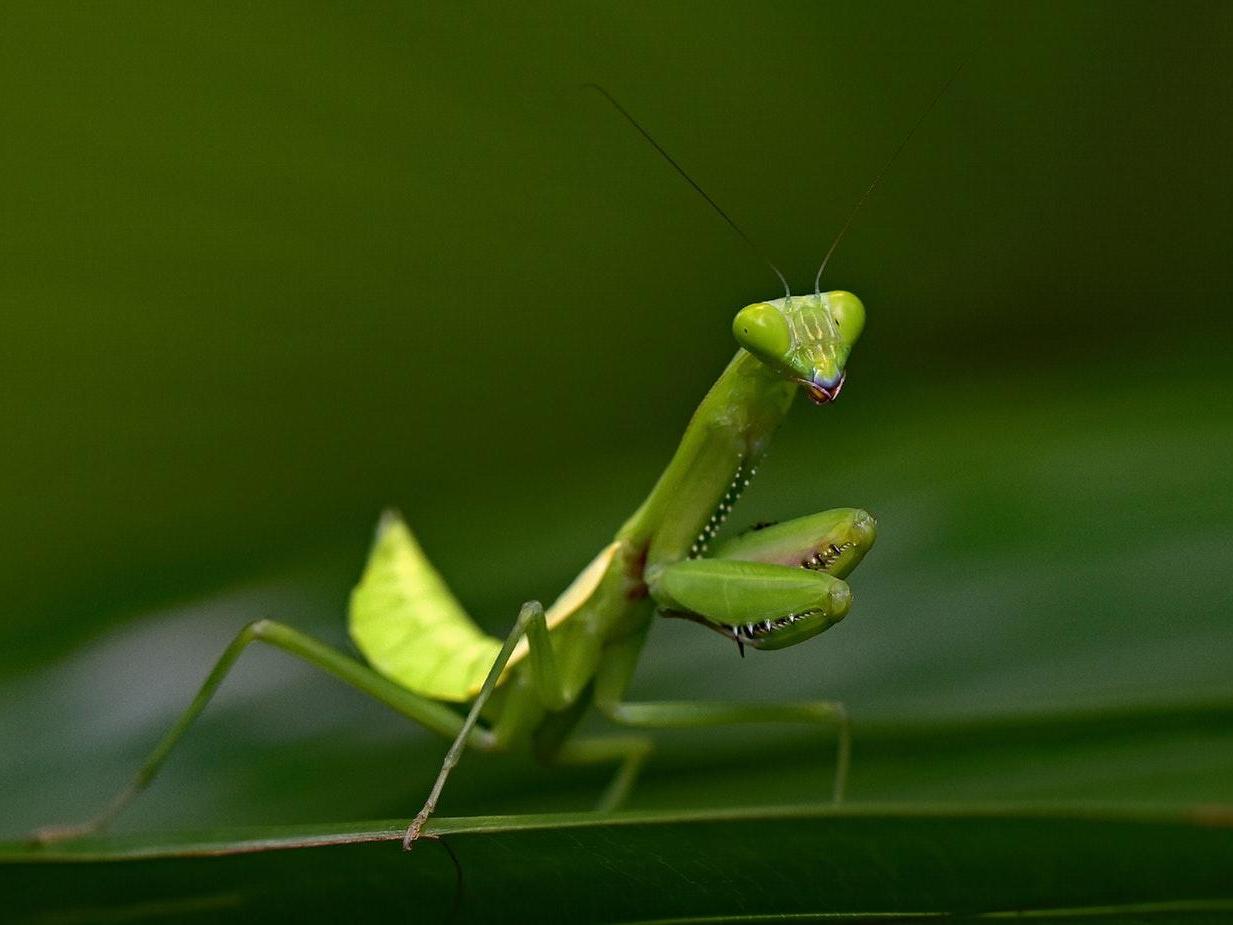Praying mantis seen hunting for fish in wild for first time ever
Ravenous insect found walking on water lilies to reach its prey

A praying mantis has been found eating fish in the wild for the very first time.
The predatory insect is known to devour birds, reptiles and small mammals such as mice, but it has never been captured fishing for food – until now.
Scientists discovered an adult male hunting and devouring guppies at a pond in Karnataka, southwest India.
The research team were surprised by the visual capability of the mantis, which could see its prey underneath the surface of the water.
To reach the guppies, the insect would walk on the leaves of water lilies and water cabbage before plucking them out of the water.
Dr Roberto Battiston, of the Museum of Brenta Canal in Valstagna, Italy, said the creature was a male more than two inches long and recognisable by its white antennae.
He and his Indian colleagues identified it as a species called Hierodula tenuidentata Saussure, more popularly known as the giant rainforest mantis. It came back to the same roof garden pond five days in a row, catching at least two fish a day.
Praying mantises have occasionally been observed to feed on vertebrates, including small birds, lizards, frogs, newts, mice, snakes and turtles.
But many of these cases have either not been scientifically validated or have occurred under human-manipulated circumstances. And there is no previous scientific data of mantises preying on fish.
Dr Battiston said: “Some other invertebrates like spiders, and especially fishing spiders, can hunt in water, but the origin of this adaptation occurred more than once in their evolution and is not well understood.
“Our observations in this fishing mantid – a unique case at the moment – may indicate the origin of this phenomenon.”
The insect managed to catch the fish either at sunset or late at night. Besides their visual skill, mantises appear to have evolved impressive learning abilities too.
“Many mantids, including Hierodula, are known to be sit-and-wait predators, and there is evidence at least some species carefully choose their habitat and hunting field,” Dr Battiston said.
Praying mantises can turn their heads 180 degrees to scan surroundings. They also have five eyes – two large with three smaller located in between.
Adult females are known to eat their mating partners after sex.
Additional reporting by SWNS
Join our commenting forum
Join thought-provoking conversations, follow other Independent readers and see their replies
Comments
Bookmark popover
Removed from bookmarks